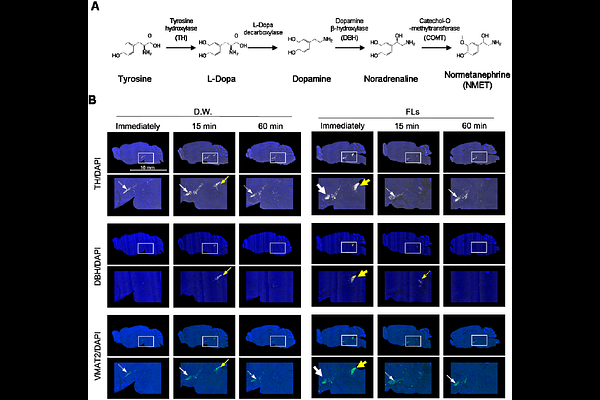Astringent flavanol fires the locus-noradrenergic system, regulating neurobehavior and autonomic nerves

Astringent flavanol fires the locus-noradrenergic system, regulating neurobehavior and autonomic nerves
Fujii, Y.; Taira, S.; Shinoda, K.; Yamato, Y.; Sakata, K.; Muta, O.; Osada, Y.; Ono, A.; Matsushita, T.; Azumi, M.; Shikano, H.; Abe, K.; Calabrese, V.; Osakabe, N.
AbstractAstringent flavanols (FLs) have shown enhanced cognitive function in a large intervention trial, but their mechanism remains unclear due to poor bioavailability. An oral dose of FLs increased spontaneous locomotion and memory, with activation of the sympathetic-adrenergic-medullary (SAM) and hypothalamic-pituitary-adrenal (HPA) axis, as shown by increased urinary catecholamine concentrations and corticotropin-releasing hormone (CRH) mRNA expression in the paraventricular nucleus (PVN) of mice. MS imaging showed high intensity of noradrenaline (NA) in the locus coeruleus (LC), which plays a key role in learning and memory, the hypothalamus lateral preoptic area, which affects sleep and arousal, and the brainstem as the origin of the sympathetic nervous system, immediately after FLs administration. Subsequent in situ hybridization (ISH) analysis showed that these NAs originated from LC. Astringent compounds like FLs influence brain function and physiological changes. Furthermore, the present series of results presents novel mechanisms by which food sensory properties maintain homeostasis.